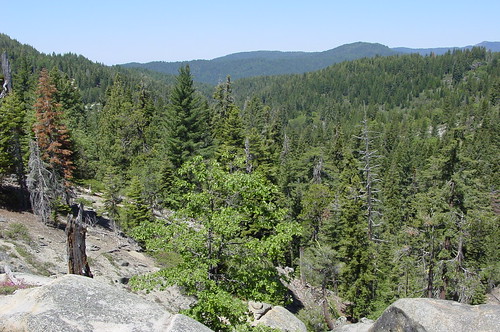Disaster Response on the Web
/The use of the Web and other networked technologies for disaster response is a hot topic, especially in nations like the US where such technologies are prevalent. Response on the Web has varied from insistence that everyone should use Twitter in disasters, to problems with signal to noise in crowdsourced search and rescue. Since maps and geospatial data play critical roles in disaster response, we spent a lab meeting discussing how web maps and webGIS have contributed. Read on for the collection of links and random thoughts.
Darfur in Google Earth
Tim walked us through the US Holocaust Memorial Museum's Crisis in Darfur Google Earth layers, which feature photos, stories, and the locations of destroyed villages. The purpose seems to be to inform the population of Google Earth users about the extent of the crisis, and channel them toward the responses recommended by the USHMM.
Katrina
We also discussed the imagery of Katrina's aftermath that was collected and shown on Google Earth very soon after the storm (and has been suspended at the time of this writing). This NYTimes article suggests the effort began with Google Earth users assembling imagery that NOAA had collected and released, but doesn't mention any data collected at Google behest. Forbes also has a good article. Several mashups, including Scorpionus.com, played a role in the response, and there was a apparently a significant effort by the open source GIS community to collect and distribute imagery, though I haven't seen much media coverage of it or any evidence of its use [please pass it along if you find some].
SoCAL Fires of 2007 and other Fires
We've talked about a few maps made in response to the fires on this blog, including maps by
None of us knew whether any of these maps were used by people on the ground, which seemed like one of the purposes of the Google Maps, as they were created while the fires were burning and seemed to be regularly updated with fresh data. I would also argue that one of the most important maps of the fires was the MODIS imagery of the smoke plumes that made it into a lot of the popular news, at least in terms of communicating the magnitude of the disaster. Shasta also showed us maps made by NorthTree Fire International. I also talked briefly about the use of Twitter in disseminating information about the fires. Individuals and the Red Cross were both using Twitter to publish updates about the fires that could have been used in real time response, but it's still unclear how much these sources were actually used.
Cosco Butan Oil Spill of 2007
There have been a few interesting maps made in response to the oil spill in the Bay, including
- Google Map by the SF Chronicle
- "Professional" map by the SF Chronicle (very interesting to compare the cartography here with the Google Maps version
- Google Map by KCBS San Jose
- Audubon map of affected bird habitat
Summary
Web responses to disasters take many forms, and serve several purposes. One interesting trend is the increasing ease of publishing geodata about disasters on the Web. Ten years ago, only governments would have the resources to quickly collect and disseminate imagery and ground-based data. With Katrina we saw a philanthropically motivated private sector achieve similar results based on existing business relationships (Google and imagery collection companies) and existing data infrastructure (Google Earth, Google Maps). Now we are seeing organizations with even fewer technological resources collecting and distributing data using mashups and web mapping tools like Google My Maps. There are even individuals who have made potentially important contributions during disasters (e.g. Nate Ritter during the 2007 SoCal fires, and Kathryn Cramer during Katrina). One issue that I find important in all these mapping efforts is that of trust. How much do you trust data from NOAA, Google, your local public radio station, or some programmer obsessed with microblogging? How useful is a large, crude polygon showing oil slick sightings?
Some more links we didn't discuss
- Nate worked on two digital archives of disasters: The Hurricane Digital Memory Bank and the 9/11 Digital Archive.
- My classmate Nick Rabinowitz passed along several great resources on people who study and write about information systems for disaster response:
- Paul Currion's blog
- Randall Kemp at the University of Washington
- the ConnectivIT group at the University of Colorado, Boulder.
- my del.icio.us links on disaster response
 After more than two decades of service, Landsat 5 is showing signs of its age.
After more than two decades of service, Landsat 5 is showing signs of its age. 




 The folks over at the
The folks over at the  By Yudhijit Bhattacharjee
By Yudhijit Bhattacharjee 
